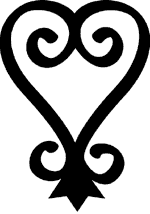第35届泛非承认周年庆典
“UjimaA”
2024届毕业生
The 非裔美国人资源中心 (AARC) and the 泛非承认庆典 (PARC) Planning Committee invites graduating students to register for the 35th 一年一度的泛非承认庆典 2024年5月5日(星期日)下午12点至2点在托国立馆举行. 这个庆祝活动是对加州州立大学的认可, 富勒顿的黑人和非裔美国人毕业生. 帕洛阿尔托研究中心的主题围绕宽扎节的七项原则展开, 今年的主题是Ujamaa,意思是合作经济. 登记参加婚礼不需要任何费用. Only students registered for the event will be eligible to receive a kente stole. If you have any questions, please contact the 非裔美国人资源中心 at aarc@wolaipei.com or (657) 278-3230!
Please note that stoles are limited and only available to the first 120 registered students. 在登记表上, you will be asked for phonetic spelling and information about the degree(s) you will be obtaining. Please ensure this information is accurate for our booklet and ceremony logistics!
如果因为某种原因你意识到你放错了信息, 请立即联系非裔美国人资源中心 aarc@wolaipei.com![]()
常见问题
Q. 帕洛阿尔托研究中心(或者他们所说的黑人研究生院)是什么时候??
- The 泛非承认庆典 will take place on Sunday, May 5 from 12:00 pm - 2:00 pm
Q. 多少钱?
- 今年的颁奖典礼对学生免费!
Q. 客票呢??
- 今年的颁奖典礼将在托国立馆举行. 由于亭子里有足够的空间, there will be a 4 guest maximum per student graduate participant this year.
Q. 学生预计什么时候到达?
- Students have been instructed to arrive no later than 10:45am and check-in in at the TSU Pavilions. 进一步的指示将从那里发出.
Q. 婚礼的服装是什么?
- 学生们应该穿着全套服装到达学校! Please wear your cap and gown to the 泛非承认庆典.
Q. 客人把车停在哪里??
- Students and guests are encouraged to park in the State College Parking Structure behind the TSU. 周末停车免费.
Q. 会招收硕士生和博士生吗?
- In order to keep the event under two hours and in compliance with University Commencement, we will 不 胡德硕士生和博士生参加庆典.
Q. 我怎么收到肯特偷来的东西?
- 奖牌只会在毕业典礼上发给学生. 学生不得提前取车. 没有例外.
Q. 如果我有其他问题,我该和谁联系?
- 其他问题可以直接问伊莱娜·西德尼 elsidney@wolaipei.com.
Q. 额外的问题
- 请浏览
DIRC识别庆典常见问题页面

 一般问题的答案或十大靠谱网赌平台
aarc@wolaipei.com.
一般问题的答案或十大靠谱网赌平台
aarc@wolaipei.com.
To ensure your name and degree is on the booklet of participants that every graduate will receive at the ceremony, 你必须不迟于星期三登记, 4月3日rd 2024年下午5点. If we have not yet met our 120 max, attendees who sign up after 4月3日rd 2024 may not have their name mentioned in the booklet to ensure we can purchase, 在婚礼前及时打印并准备好小册子.
adinkra符号

Adinkra符号被认为起源于Gyaman, 今Côte科特迪瓦(西非). The King of Gyam wore pattered cloth as he was taken away from his kingdom. These myriad of symbols are now used in cloths that is specially made from the region to mark movement in one’s life due to special events, 比如葬礼和婚礼. These patterns are made in wooden blocks stamps made from the bark and roots from the Kuntuni trees, 原产于该地区的树木. Even the ink used to mark the cloths are natural and not made to last beyond the event they were intended for.
Sankofa is a principle derived from the Akan people of Ghana that one should remember the past to make positive progress in the future. The Akan tribe of Ghanaian Africans is part of the larger Ashanti (or Asante) group of people from West Africa.
Sankofa这个词在阿坎特威语中的字面意思是“找回”, but the meaning of Sankofa is more broadly expanded upon in this Akan proverb: “Se wo were fi na wosankofa a yenkyi” (translated from the Akan language to mean “it is not taboo to go back and fetch what you forgot”). The power of Sankofa centers around this: to know history and your heritage is to know your current self, 你周围的世界, 以及如何改善两者.
桑科法启发了行动主义和艺术. African American studies and Africana studies often reference the spirit and substance of Sankofa; and filmmakers, 音乐家, 艺术家们在他们的作品中使用了这个词及其相关的意象. 起源于加纳, the concept and its symbols have become pan-African and even worldwide in their scope of influence.
There are two main Sankofa symbols—also known as Bono Adinkra symbols: one is a mythical bird turning its head backward to eat a precious egg and the latter is a stylized heart. People often manufacture the Sankofa bird as a gold weight or emblazon the Sankofa heart shape on art projects or even their bodies as Sankofa tattoos. The latter also appears on many gates in America, in New York in particular.
肯特布贼的历史背景
至少从20世纪70年代开始, African American graduates -particularly university graduates- wear a kente cloth stole over their graduation robes. The kente cloth stole represents the graduates' pride in their restored Afrikan heritage, 还有他们毕业后的骄傲. The Kente Cloth is a material produced from the Western African hemisphere, and direct ties to the stolen lineage African American had endured due to the American enslavement trade.
Kente cloth is deeply intertwined with the history of the Ashanti nation. 阿散蒂帝国或联盟, 它位于今天的加纳, 最早出现在17世纪的西非. The Ashanti are members of the Akan people who speak the Akan or Ashanti dialect. The word “Kente” which means basket comes from the Akan or Ashanti dialect. 阿坎人也称肯特为织布,意思是织布. 肯特布的设计各不相同, 不同的设计, 颜色, 每种图案都有其特殊的含义和故事. 但肯特布也反映了阿散蒂人的历史, from the emergence of the various Ashanti Kingdoms to the development of the slave trade up to and including contemporary life in Ghana.
根据阿散蒂人的传说, 两个农民, Krugu Amoaya和Watah Kraban, 来自邦威尔村, 遇到一只蜘蛛, Ananse, 织网. Amazed by the web’s beauty, the farmers returned to their homes eager to try and recreate the web. They wove a cloth first from white, and then black and white, fibers from a raffia tree. 然后他们把自己的布料献给阿散蒂人, 或王, 纳纳·奥塞·图图(1701年至1717年在位).
As descendants of ancestors that come from the West African Ashanti Empire, African American students pay homage to their ancestors by wearing the kente stoles during graduation.

